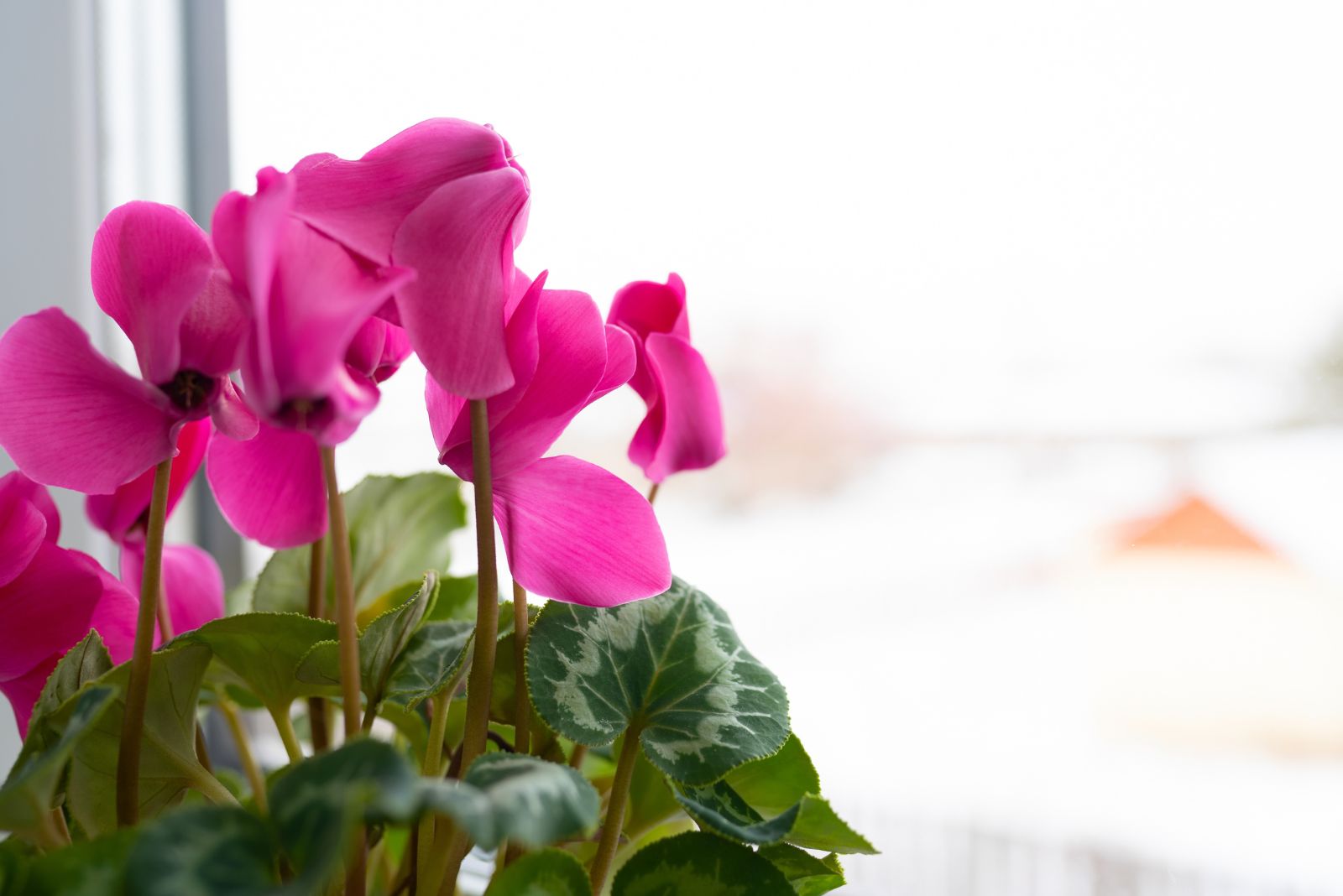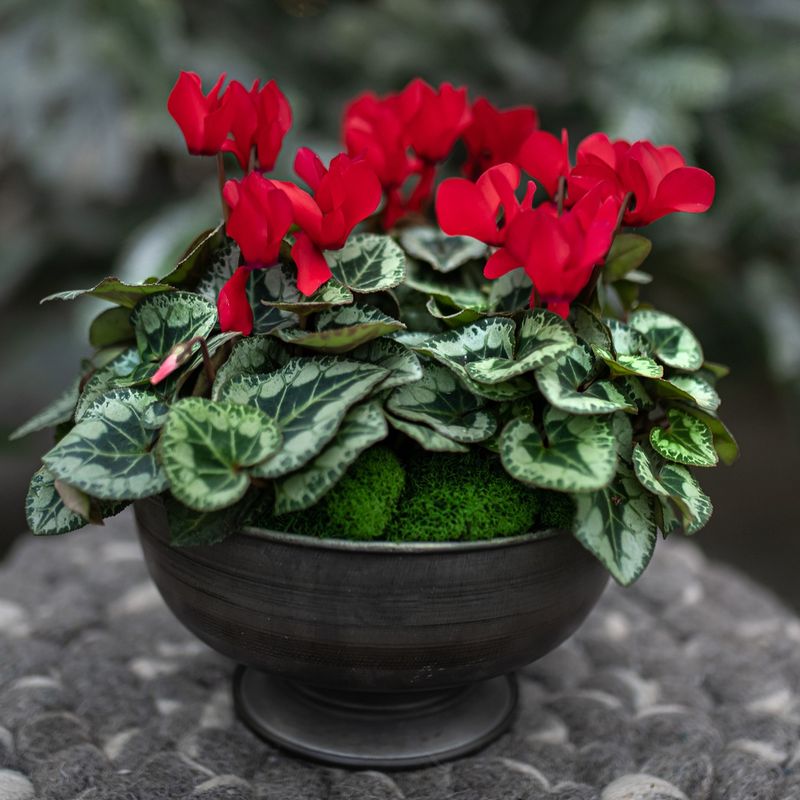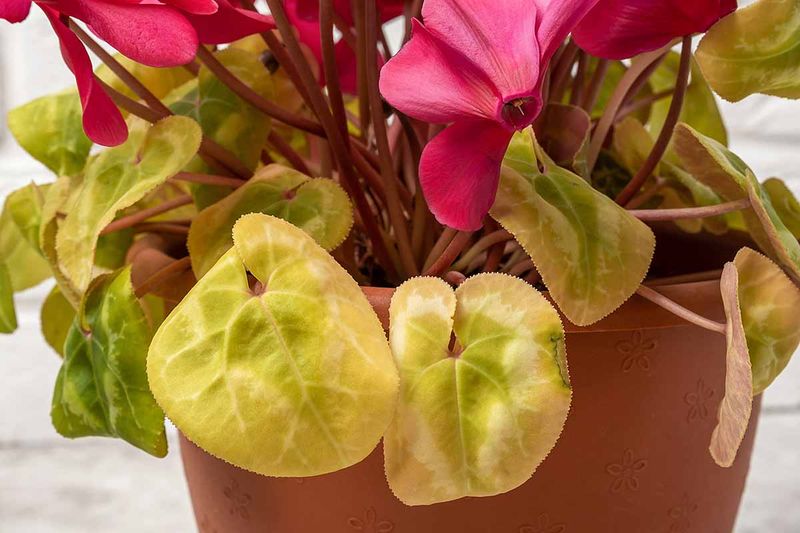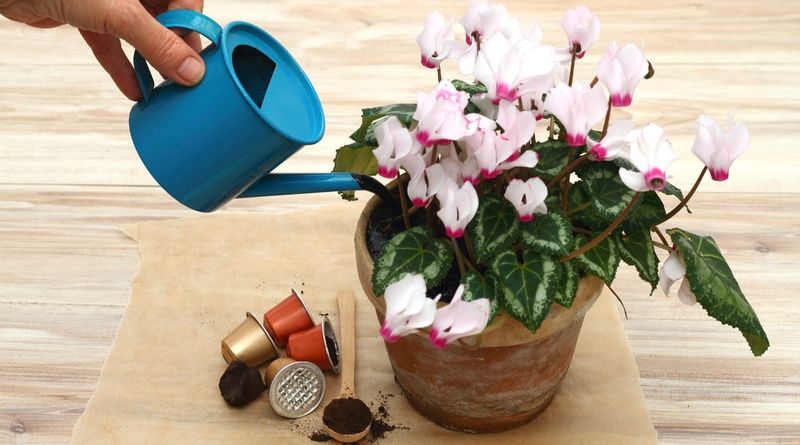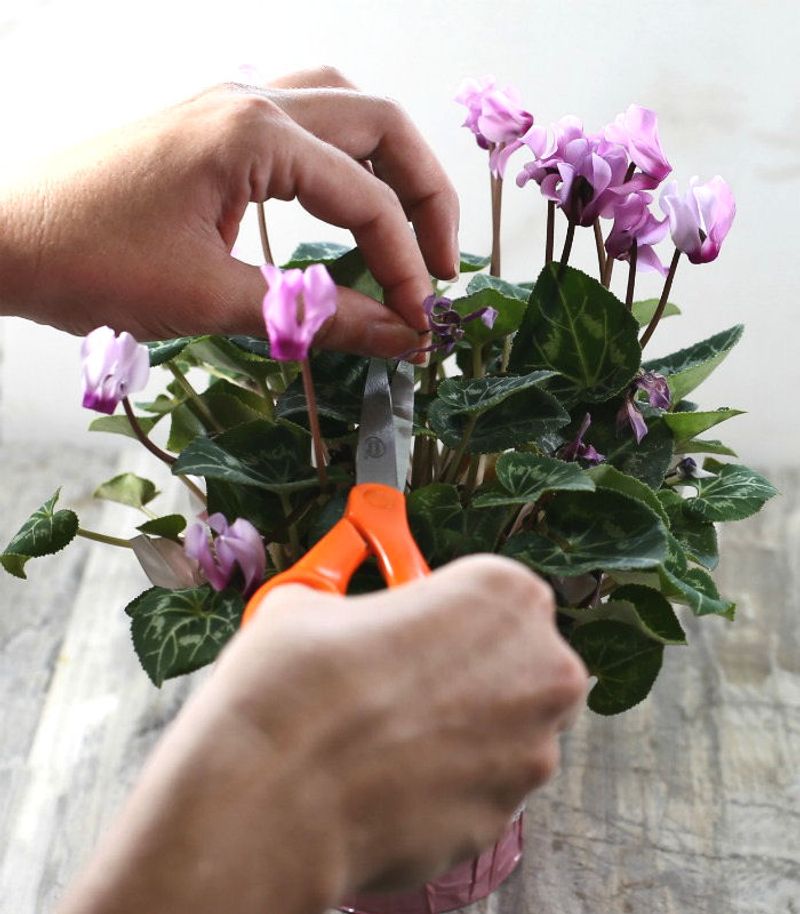Cyclamen may look fussy, but Pennsylvania gardeners know the trick that keeps it blooming year after year.
When this little plant starts to slow down, they don’t throw in the towel.
They give it the cool, calm conditions it craves, and cyclamen springs back like it never missed a beat.
While many flowers call it quits once winter settles in, cyclamen proves it can rise to the occasion with the right touch.
With one key practice, gardeners across the state turn a tired plant into a fresh burst of color.
The Key Is To Give The Plant A Cool Spot
Cyclamen absolutely hate warm rooms and will sulk without blooms if temperatures climb too high.
They thrive in conditions most people find chilly.
Find the coolest spot in your Pennsylvania home, ideally between 50-65 degrees.
Unheated sunrooms, enclosed porches, or drafty windows work perfectly.
Avoid placing cyclamen near heating vents, fireplaces, or sunny south-facing windows.
Think of them as cold-weather champions that bloom best when you need a sweater indoors, making them ideal companions for Pennsylvania’s frigid winters.
Provide Bright Light Without Direct Sun
Insufficient light causes weak growth and few flowers, while harsh direct sunlight scorches delicate leaves.
Finding the sweet spot makes all the difference.
Position your cyclamen where it receives bright, indirect light for most of the day.
East-facing windows work beautifully in Pennsylvania homes, offering gentle morning sun.
South and west windows need sheer curtains to filter intense afternoon rays.
Rotate the pot weekly so all sides receive equal light, promoting symmetrical growth and abundant blooms that circle the entire plant evenly.
Give Your Cyclamen A Summer Vacation
Cyclamen naturally go dormant when warm weather arrives, just like bears hibernate in winter.
Your plant needs this rest period to gather energy for future blooms.
Stop watering gradually as leaves turn yellow in late spring.
Move the pot to a cool, dark spot like a basement or garage where temperatures stay around 50-60 degrees.
This summer break mimics the plant’s natural Mediterranean climate cycle.
Pennsylvania’s humid summers can rot the tuber if you keep watering, so embrace the dormancy instead of fighting it.
Water From Below, Never Above
Pouring water directly onto cyclamen leaves and crown spells disaster.
The tuber sits right at soil level and rots easily when wet.
Place your pot in a saucer filled with water instead.
Let the soil soak up moisture from below for about 15 minutes, then dump any leftover water.
Pennsylvania’s winter heating makes indoor air super dry, so check soil every few days.
Bottom watering keeps the tuber dry while roots drink their fill, preventing the number one destroyer of cyclamen plants.
Feed Regularly During Active Growth
Blooming takes tremendous energy, and cyclamen need fuel to produce those gorgeous flowers month after month, starved plants simply won’t rebloom.
Start fertilizing when new growth appears in fall, using half-strength liquid fertilizer every two weeks.
Choose a balanced formula or one slightly higher in phosphorus for better blooms.
Stop feeding completely once the plant enters dormancy in late spring.
Pennsylvania gardeners who maintain this feeding schedule see twice as many flowers compared to those who skip this crucial step.
Remove Spent Flowers The Right Way
Deadheading encourages more blooms, but cutting cyclamen flowers with scissors leaves rotting stems that invite disease.
There’s a better method, grasp the entire flower stem close to the base and give it a gentle twist while pulling upward.
The stem should pop out cleanly from the tuber.
Remove yellowing leaves the same way, twisting and pulling rather than cutting.
This Pennsylvania gardener trick prevents fungal problems while signaling the plant to produce fresh flowers instead of wasting energy on seed production.
Repot After Dormancy Ends
When fall arrives and your rested cyclamen shows tiny new leaves, it’s time for fresh soil.
Old potting mix loses nutrients and can harbor disease.
Choose a pot only slightly larger than the tuber, as cyclamen bloom better when somewhat crowded.
Use well-draining potting mix designed for African violets or similar plants.
Plant the tuber with its top third exposed above soil level, never buried completely.
Pennsylvania’s experienced growers swear this repotting ritual gives cyclamen the perfect fresh start for another spectacular blooming season.

